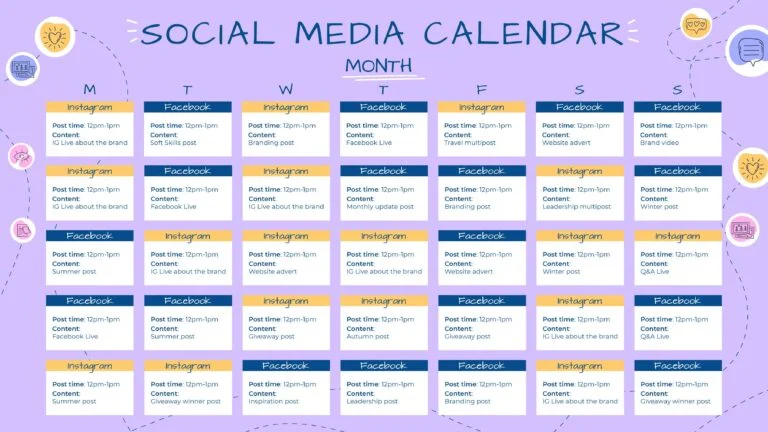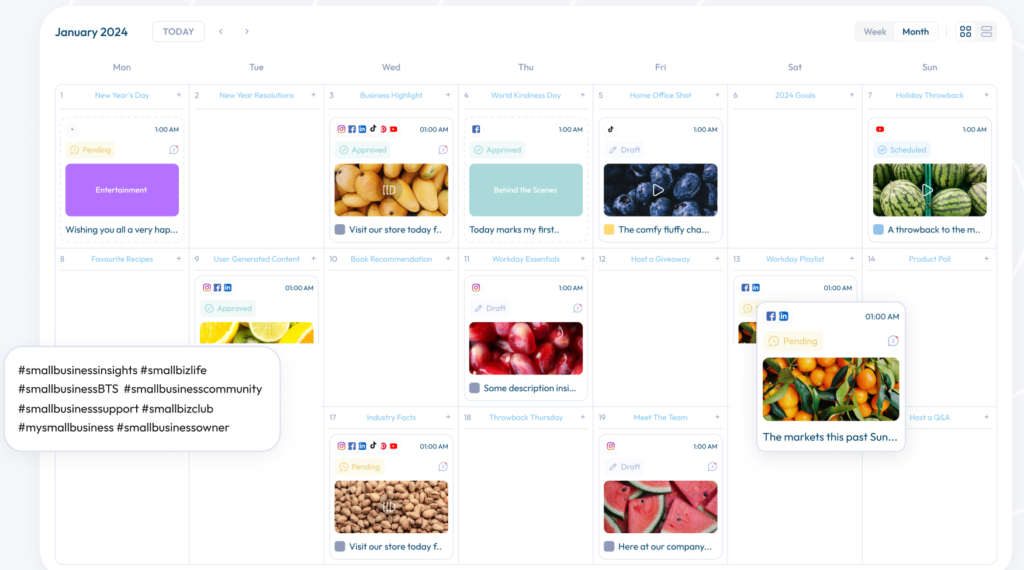How to Create an Effective Content Calendar for 2024
Content is the driving force behind successful websites and social media platforms. From TikTok’s rise to viral reels and witty Twitter threads, great content keeps us engaged. But behind all that engaging content is a well-planned content calendar.
Creating an effective content calendar isn’t just about staying organized, but it’s about making your brand shine with consistent, relevant, and engaging content. Ready to master the art of planning your content for 2024? Let’s dive in!
What is a Content Calendar?
Think of a content calendar as your roadmap for content creation. It’s a schedule that lays out what you’ll be posting and when. Gone are the days of using spreadsheets, now, content calendar tools make planning smoother and more collaborative.

Why Do You Need Content Calendar Software?
Creating content without a plan is like building a house without a blueprint. It leads to chaos and inconsistent output, hurting your brand’s credibility. Here are some key benefits of using content calendar software:
- Stay Organized: Centralize your content ideas, assets, and schedules in one place. Collaboration becomes easy!
- Consistency is Key: Ensure your messaging is spot-on and your brand voice remains strong across all channels.
- Repurpose Smartly: Spot opportunities to refresh and reuse successful content.

4.Collaborate Seamlessly: Work in real-time with your team and keep everyone on the same page.
5.Define Roles Clearly: Assign tasks and set deadlines to streamline the workflow.
6.Track Performance: Measure how well your content is doing and tweak your strategy accordingly.
7.Boost Conversions: Align your content with your sales goals to turn leads into loyal customers.
Sure, content calendar tools might seem like an investment, but they pay off by saving time, ensuring consistency, and driving engagement.
How to Create an Effective Content Calendar
- Conduct a Content Audit Take a look back at what worked and what didn’t. Identify gaps and opportunities for improvement. A little competitive analysis can also give you insights into what’s trending in your industry.
- Set Clear Content Goals Define what you want to achieve. Maybe it’s increasing website traffic by 20% next quarter or boosting social media engagement by 30% this year. Clear, measurable goals are your guiding stars.
- Create an Editorial Workflow Map out the journey from idea to publication. Define roles, set deadlines, and establish a review process to keep everything on track.
- Choose Your Channels and Content Mix Use your audit findings to decide the best content types for your audience. Mix up blog posts, videos, infographics, and social media updates to keep things exciting.
- Set a Realistic Publishing Schedule Avoid burnout by setting a manageable schedule. Remember, quality always trumps quantity.
- Pick the Right Content Calendar Software Find tools that fit your needs. Whether it’s Hootsuite, Asana, CoSchedule, Monday.com, or even Google Calendar, pick what works best for you.
- Stay Flexible The world changes fast, so keep some wiggle room for unexpected events or industry shifts.
- Highlight Key Dates and Events Don’t miss out on holidays, product launches, and industry events. Timing is everything!
- Decide on a Posting Cadence Choose how often you’ll publish content. Consistency builds trust, so pick a rhythm that fits your resources and audience expectations.
- Plan for Post-Publishing Promote your content through social media, email blasts, and repurposing. Track performance and use analytics to refine your approach.
- Review and Revise Regularly Keep your content calendar fresh by regularly reviewing and updating it based on performance and industry trends.
